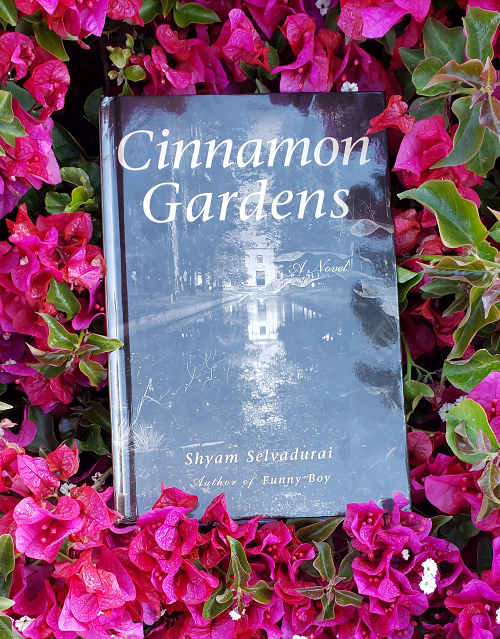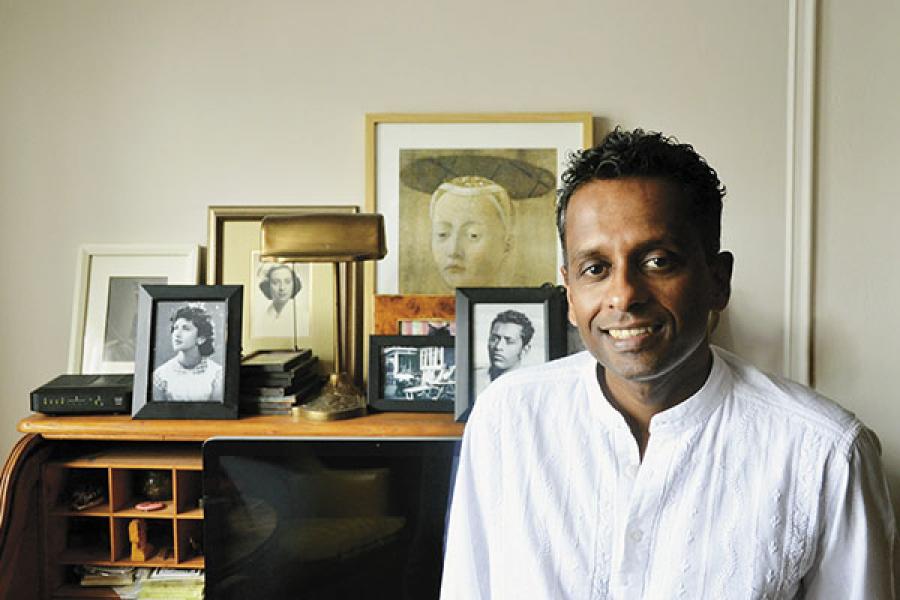Turns out Cinnamon Gardens has little to do with ‘Cinnamon’ or ‘Gardens’, but a lot to do with the complex intergenerational dynamics and colonial socio-politics within Ceylonese ‘high society’. Quite a discovery for bleary-eyed me on a Sunday morning library visit.
Annalukshmi, who yearns to be someone who doesn’t exist—a native, ceylonese woman in leadership for education. She is uninterested in love on the whole, evading her vindictive father’s suitor. Yet, her story doesn’t just fit into the cliched “of-marriageable-age-but-wants-to-pursue-her-career” trope, rather, it observes the nuances of female desire and subtleties of colonised class-gender distinction.
‘Cinnamon Gardens’ is, in fact, an affluent suburb of the then Ceylon (now, Sri Lanka), nestled in which the narrative emerges as a 1920s portrayal. It is home to the two protagonists—the young, spirited and bold Annalukshmi Kandiah, and her reserved, troubled and self-effacing uncle Balendran Navaratnam. Their dual perspectives occupy different, yet familially joint, spaces, complimenting each other’s inward and outward perspectives.
Backstories as an influence on the character’s present
With the opening of each chapter by a quote from the Tamil classical philosophy text ‘Tirrukal’, the text is steeped into the questioning of traditional histories by modern day realities. The entire nation is in the midst of political reform—the regulations around who holds power are being questioned, with “universal franchise” (aka voting rights for all, irrespective of gender, class, etc) finally being officiated towards the end of the book’s timeline. This scenario sets the stage for the character’s life to be changed in equal measure.

We see how Annalukshmi and her sister’s lives are impacted by their parent’s conflict over their inter-religious marriage, with her mother reverting to rigid social norms for their futures. Her confidante Nancy is also uniquely positioned due to her adoption by a British christian missionary after traumatically becoming an orphan in her childhood—which has complex repercussions for her later desire to marry someone from a different religion and a ‘lower-class.’ Balendran’s brother being exiled due to his history of having an affair with their father’s domestic help, also impacts the present, when Balendran must attempt to reconcile with his brother’s family before his(the brother’s) death.
Also read: Book Review: ‘Forgotten Refugees: Two Iraqi Brothers in India’ By Nandita Haksar
Patriarchy within Ceylonese Society
The two main characters’ stories are not independent and both depict conflict between the self and a controlling power structure. We are introduced to Annalukshmi, who yearns to be someone who doesn’t exist—a native, ceylonese woman in leadership for education. She is uninterested in love on the whole, evading her vindictive father’s suitor. Yet, her story doesn’t just fit into the cliched “of-marriageable-age-but-wants-to-pursue-her-career” trope, rather, it observes the nuances of female desire and subtleties of colonised class-gender distinction.
When, she realises that her very idol and support system, Miss Lawton (the British missionary and her school’s Headteacher)—who encouraged her to pursue teaching—upholds discriminatory values (RED FLAG: white feminism), this marks her coming-of-age into the realisation that she must fight for her own vision of a truly equitable vision of society and education system. She, thus, gets involved in the Woman’s Franchise movement and ultimately accepts a senior teaching position at another institution. Her opinions on love shift as well, depicting her non-linear growth throughout the work.

Balendran must also reconcile with his own personal traumatic history of being outed to his father, and subsequently, manipulated into estranging his lover and marrying his cousin. He is thus forced to grapple with his own desires versus the societal expectations of being a good son, a good husband and a good father to his wife and their son—a bit of a cliche, but effective at portraying perceptions of this taboo in the early 1900s. It was quite interesting, also, to note the language used—the subtle label of ‘Oscar’s friends.’ The powerful description is hardly subtle though. As pointed out by some critics, the story passes within the time frame of a year, between the two birthdays of his old tyrannical father (Hazarika)—a powerful literary motive that depicts how their lives are governed by this central character.
Given that his father is hardly left with any humane quality, towards the end—once Balendran is exposed to the details of his true nature—the reader can assume that his character solely exists to represent an elite, heteronormative, casteist patriarchy (rather than a sympathetic human). Daddy issues extraordinaire.
Class Divisions and Casteism
Likewise, Balendran struggles to escape his father’s shadow and express his true ideals–which would mean rebelling against his own father’s political position as a wealthy facilitator of the colonial government. He believes in universal suffrage as a means to equity for a nation stricken with large-scale extreme poverty vis-a-vis a tiny portion of dinner-parties-and-finery aristocracy—except that his father is the very apex of this aristocracy.
When his elder brother falls in love with a woman of a lower caste, the patriarch is quick to make him an outcast. Later, their son faces similar discrimination. The impact of the patriarch’s bigoted notions on the sons (and grandsons) of the family is a recurrent theme throughout Balendran’s story line.

Source: Personal Website
His radar of control only briefly encroaches into Annalukshmi’s storyline, when he involves himself into his nieces’ matrimonial life. Given that Annalukshmi’s mother is pressured into marrying her daughters, replicating a pride-and-prejudice-esque setup (Nayasena), Annalukshmi herself rebels against the constant pressures of an arranged marriage. With blossoming seeds of romantic desire, she seeks to befriend the patriarch’s ousted grandson instead—to reverberating consequences when his casteist self ultimately intervenes.
Cinnamon Gardens, while an evocatively informative read, is a bit too overwrought with tropes and narrative conventions. Perhaps this is a literary metaphor for the frustrating bourgeoisie of upper-class Ceylon—but it is certainly a strange occurrence in the queer literary canon.
Through the western Marxist lens, one gleans anti-caste perspectives from Cinnamon Garden’s mindfully contextualised South Asian-ness. This forms the framework within which the two protagonists tend to view the world, critically highlighting constructed structures that, unfortunately, still exist a century later.
The Critiquing of Literary Power
On the whole, Cinnamon Gardens, while an evocatively informative read, is a bit too overwrought with tropes and narrative conventions. Perhaps this is a literary metaphor for the frustrating bourgeoisie of upper-class Ceylon—but it is certainly a strange occurrence in the queer literary canon.
There is, however, a rare sensibility of casual representation. Surprisingly, divergent perspectives do not seem enforced into the narrative: giving it the fresh air of pre-DEI-representation-bandwagon literature.
Also read: Book Review: Time And Race in Octavia Butler’s ‘Kindred’
What Selvadurai does provide liberally, as well, is an intricately profound sense of place, culture and time. For history buffs, this is a well-researched treat that allows you to step into the shoes of the upper-class power-yielders of 19th century Ceylon—a politically-tumultuous period that is undoubtedly hard to find literature on. Many critics have been left unsatisfied, but I find that it aptly conveyed novel ideas in a particularly conservative point in time.




